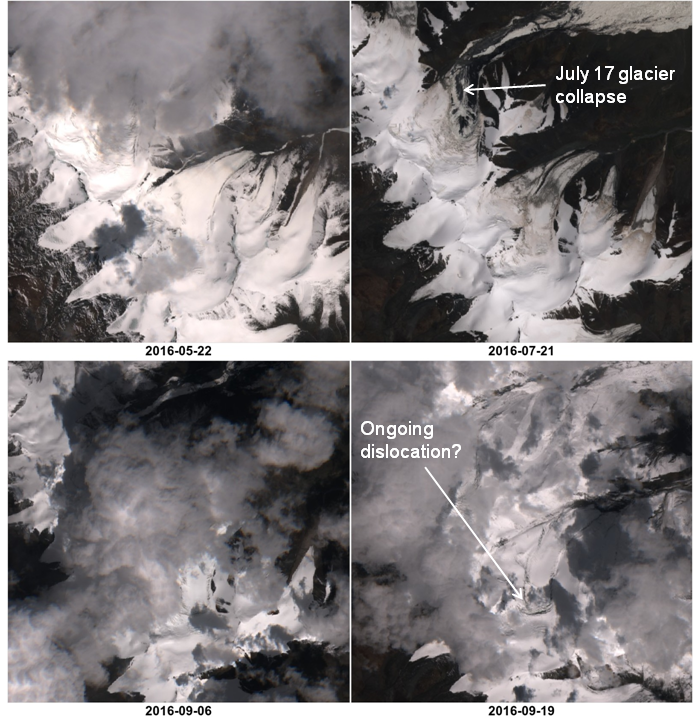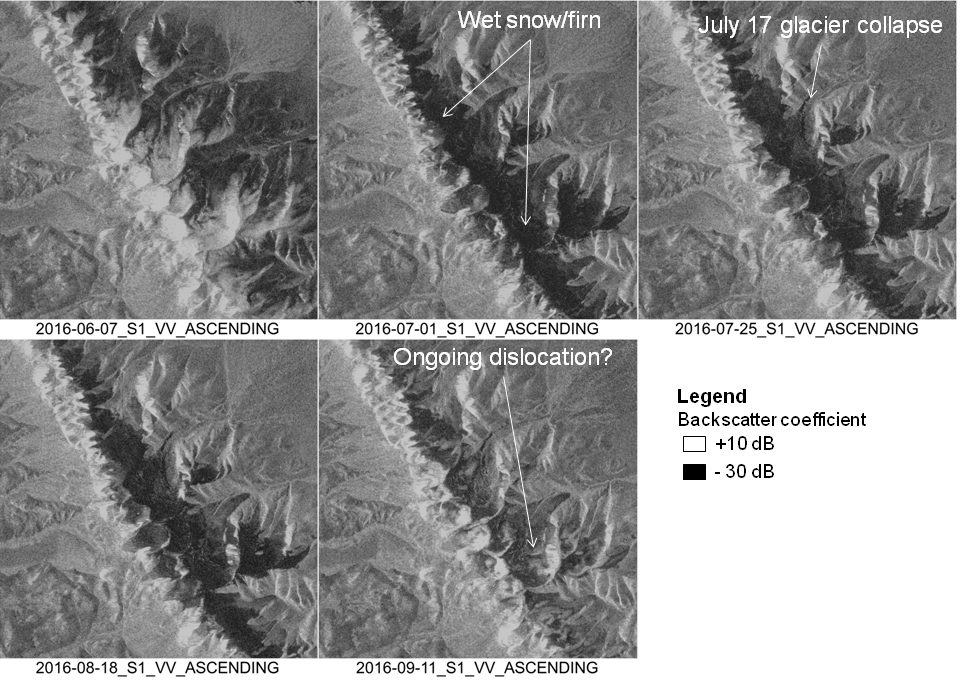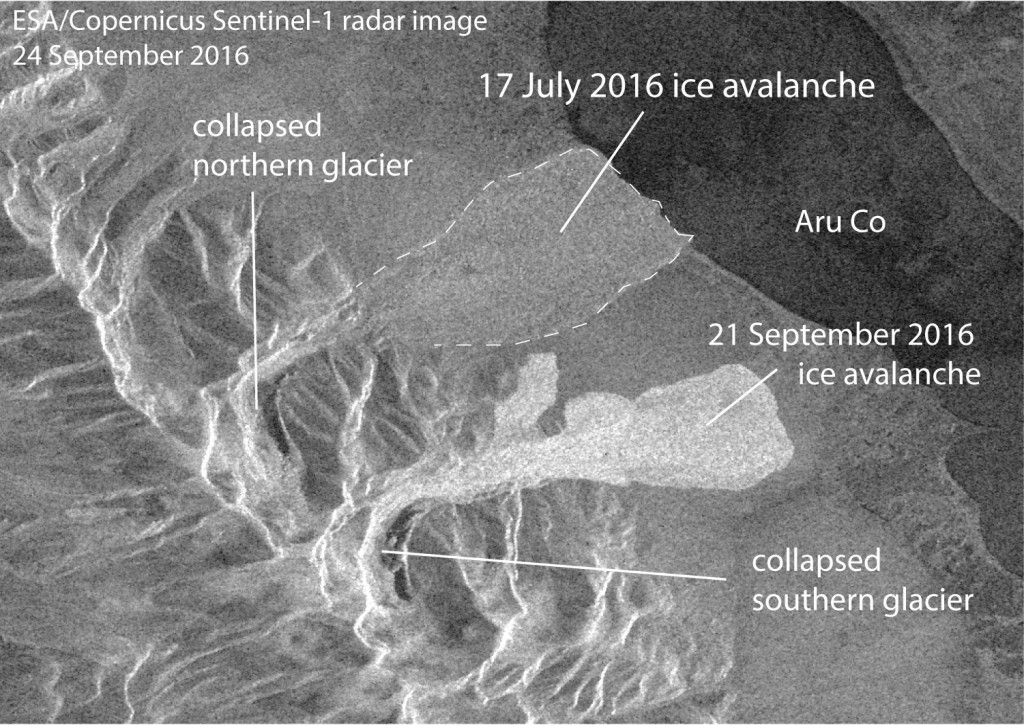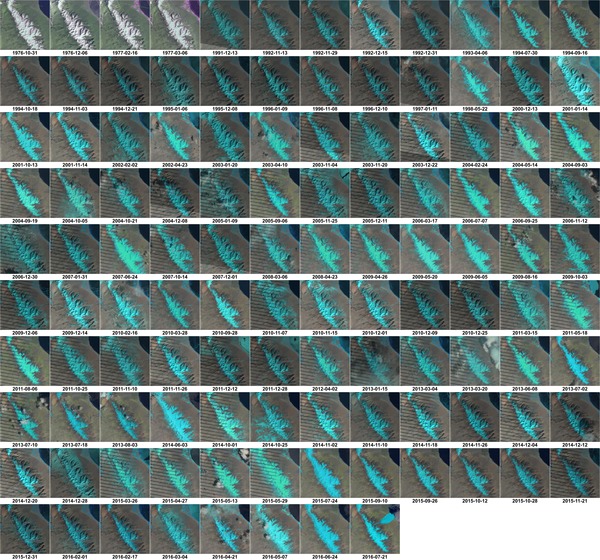
The giant ice avalanche that occurred in Tibet on 17 July 2016 and killed 9 people [1] urged scientists to scrutinize every available data to understand what caused such a glacier collapse. In doing so, they witnessed in near real time the ongoing collapse of a second glacier.In China, Zong Jibiao conducted the first field survey of the avalanche site and reported that the debris thickness reached up to 30 m. In Norway, Andreas Kääb and Adrien Gilbert gathered a number of satellite datasets to estimate the volume of the avalanche (40 to 70 millions cubic meters) and to reconstruct the glacier evolution before the collapse. They observed that the glacier showed some signs of abnormal activity before the event, including an atypical surging activity [2] for the last 10 years, and intense crevassing in the dislocation area just a few days before the event. In Canada, Joseph Shea looked at earthquake records and climate data in the area but found no apparent trigger. In Germany, Silvan Leinss used TanDEM-X digital elevation models to map the glacier elevation changes between 2011 and 2013 and noticed that the neighbour glacier, just south of the one that collapsed in July showed similar signs of destabilization (surge). Alerted by this suspicious behavior, we examined the most recent imagery provided by the ESA Copernicus satellites Sentinel-1 and Sentinel-2 and found signs of an ongoing dislocation. The information was sent to Chinese colleagues by Andreas on the same day (Sep 21) in late evening (Oslo time).



 Click here to watch an animation of these images : https://labo.obs-mip.fr/multitemp/?attachment_id=8792
Click here to watch an animation of these images : https://labo.obs-mip.fr/multitemp/?attachment_id=8792

Chapeau !
très intéressant
Bravo Simon !
good work.